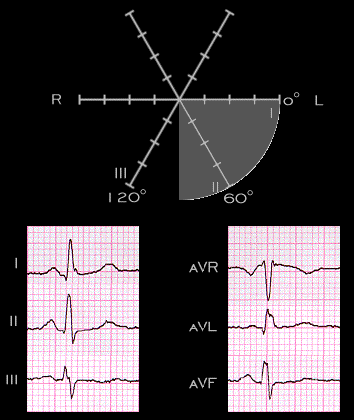
Because of the greater mass and posterior orientation of the left ventricle, these uncancelled electrical forces are directed posteriorly, somewhat inferiorly and to the left. As a result, the electrical axis of the QRS complex in the frontal plane is between 0 and 90 (degrees), much like the frontal plane electrical axis of the P wave.
The main frontal plane axis of the QRS complex in this example is shown on the next page.
